-
인도 동남아시아
전시품
전시실 소개
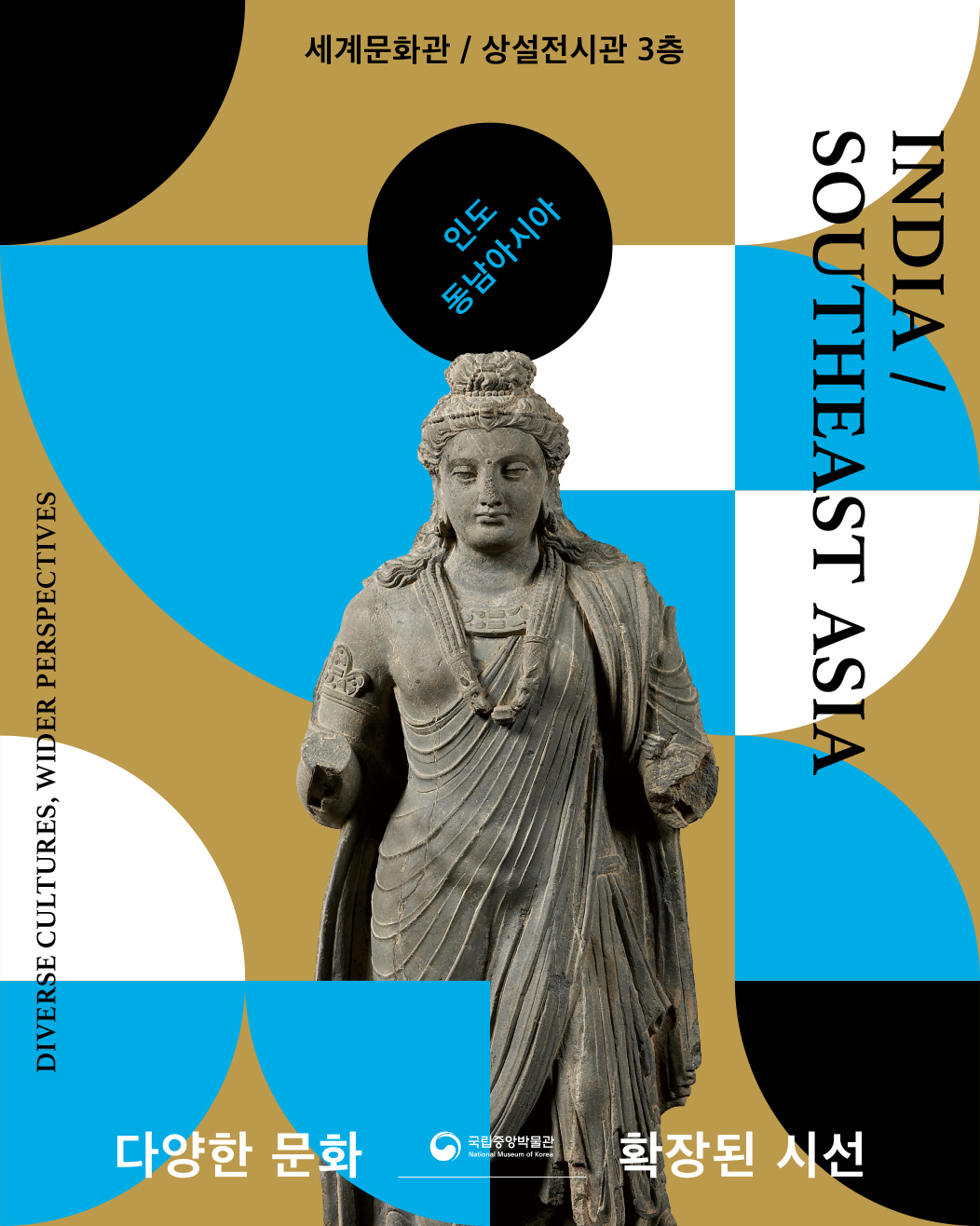
- 인도·동남아시아 전시는 ‘인간을 닮은 신들의 세계’에 대한 이야기이다. 인도와 동남아시아 미술에서 인간을 닮은 신상神像의 출현은 중요한 의미를 지닌다. 인간 형상의 신은 사람들에게 친숙함과 함께 종교적 신앙심을 고취시켰고, 그들 삶의 일부가 되었으며 고전 문학과 미술에 소재가 되었다. 인도·동남아시아실에는 불상의 발원지인 간다라와 마투라 지역 불상, 크메르 미술에 등장하는 신상, 세밀화에 그려진 여러 힌두교 신 등 인간을 닮은 다양한 모습의 신을 선보인다. 이번 전시는 당시 사람들이 종교적 관점에서 숭배의 대상인 신을 어떻게 생각하고 표현했는지 감상할 수 있는 기회이다.
전시 동영상

명품 30선, 동서양의 만남이 빚어낸 간다라 보살상 (03:29)
('명품 30선, 동서양의 만남이 빚어낸 간다라 보살상' 동영상의 대체텍스트입니다.)
명품 30선, 동서양의 만남이 빚어낸 간다라 보살상 30 masterpieces: Bodhisattva from Gandhara, at the Crossroad between East and West 노남희 학예연구사 Namhee Noh Assistant curator 깊은 눈매와 오똑한 코, Deep-set eyes and a prominent nose, 구불구불하고 긴 머리카락, long, curly hair, 구슬과 보석으로 만든 머리끈, headdress adorned with beads and jewels, 역시 굵은 보석이 박힌 화려한 목걸이와 팔찌, luxurious necklaces and armlets, also adorned with bold jewels, 단호하면서도 기품있는 얼굴. a face unwavering yet elegant. 여기 화려하면서도 고요한 분위기를 풍기는 아주 멋진 조각상이 있습니다. Here is a magnificent statue with a splendid yet calm aura. 강렬한 조명 속에서 떠오르듯 고고하게 빛나고 있는 이 조각상은 과연 어떤 이야기를 우리에게 전하는 것일까요? What kind of story does this statue tell us, shining so gracefully as if it were floating up into the glowing light? 지금 여러분의 눈앞에 있는 이 조각상은 바로 불교의 보살을 나타낸 보살상입니다. This statue you are looking at represents a Bodhisattva in Buddhism. 보살상은 보통 이렇게 각종 장신구를 걸친 모습으로 만들어졌는데요. In general, Bodhisattva statues appear dressed in accessories and ornaments as in this statue. 수수한 불상과 다르게 왜 보살상은 이렇게 화려하게 치장을 하고 있을까요? Why are the Bodhisattva statues decorated so luxuriously, in contrast to modest-looking statues of Buddha? 원래 보살이라는 단어는 출가하여 깨달음을 얻기 전까지의 석가모니 부처를 가리키는 말이었습니다. The term 'Bodhisattva' originally referred to Sakyamuni Buddha prior to his enlightenment. 그래서 석가모니가 싯다르타 왕자였을 때, As such, the statues of Bodhisattva represent Sakyamuni as Prince Siddhārtha 즉 일반 사람들 중에 가장 높고 고귀한 신분인 사람을 모델로 보살상을 만들었기 때문에 In other words, the statues were modeled after the most noble person in the world, 이렇게 화려한 모습을 하고 있는 것입니다. and this is the reason for the luxurious appearance of Bodhisattva in Buddhist sculpture. 그런데 이 보살상, 우리나라의 보살상과는 매우 다르게 생기지 않았나요? Why does this statue look so different to statues of Bodhisattva from Korea? 파마를 한 듯 구불거리며 늘어뜨린 머리카락과 눈에서 코로 이어지는 얼굴 골격, The long flowing curly hair, and the alignment of the eyes and the nose, 진짜 천을 걸쳐놓은 듯 자연스럽게 흘러내린 옷주름과 유연한 포즈, the smooth folds of the naturally flowing robes, and the fluidity of the pose, 그 아래 드러나는 생생한 근육의 질감까지. and the vivid texture of the muscle exposed beneath. 사실적인 그리스·로마 조각의 모습이 강하게 떠오르실 겁니다.All these elements indeed remind us of highly naturalistic Greco-Roman sculpture. 왜 이 보살상은 그리스·로마 조각과 매우 닮아있는 것일까요? Why does this statue closely resemble Greco-Roman statues? 그것은 바로 이 보살상이 지금으로부터 약 1800년쯤 전인 2-3세기 무렵, 간다라라는 지역에서 만들어졌기 때문입니다. It is because this statue was created in a region called Gandhara around the 2nd to 3rd centuries, about 1800 years ago. 간다라는 좁게는 오늘날 파키스탄의 일부, 넓게는 아프가니스탄의 일부까지 포함하는 곳입니다. Gandhara was a region that covered a part of present-day Pakistan and further extended to eastern Afghanistan. 고대에 간다라는 유라시아와 인도 아대륙을 잇는 교통의 요지이자, 여러 민족과 문화가 거쳐 갔던 열린 땅이었습니다. As a major transport hub connecting the Eurasian continent and the Indian subcontinent, Gandhara was an open land frequently traveled by diverse peoples and cultures in ancient times. 알렉산드로스왕의 동방원정으로 전해진 그리스·헬레니즘 문화를 시작으로, With the expedition of Alexander the Great into Asia, classical Greek and Hellenistic culture was brought into Gandhara, 서아시아 문화, 북방 유목민 문화 등이 섞여 간다라 문화를 이루었습니다. And diverse cultures from West Asia and nomadic peoples also flowed into the region, and from this cultural syncretism emerged the Gandharan culture. 딱딱한 돌을 깎아 만들었다기보다 마치 흙을 빚어 만든 듯한 섬세한 표현이 압권이지요? The most impressive part of the statue is perhaps in its exquisite expression, which makes this stone-carved statue appear as if it had been fashioned from clay. 아마도 이 상은 사원의 작은 동굴 같은 감실에 넣어져 주로 앞모습만 보였을 것입니다. Presumably, this statue was originally enshrined in a small cave tabernacle inside a temple and was mainly seen from the front. 또 오른팔의 파손된 면이 매끈하고 위쪽에 작은 홈이 있어, Furthermore, the broken surface on the right arm of the Bodhisattva appears smooth and reveals a small hole. 오른팔 끝부분을 따로 만들어 끼워 넣었음을 알 수 있습니다. This indicates that the end of the arm would have been separately created and then attached to the upper arm. 다양한 문화가 만나는 곳에서 탄생한 간다라 보살상. The Bodhisattva from Gandhara, born at the crossroad of diverse cultures. 그 아름다움은 오랜 시간이 지난 오늘날까지도 여전히 그 빛을 잃지 않고 있습니다. Its beauty still radiates in front of us after all this time.
-
-
위치
-

공식 누리집 주소 확인하기
go.kr 주소를 사용하는 누리집은 대한민국 정부기관이 관리하는 누리집입니다.
이 밖에 or.kr 또는 .kr등 다른 도메인 주소를 사용하고 있다면 아래 URL에서 도메인 주소를 확인해 보세요.

공식 누리집 주소 확인하기
go.kr 주소를 사용하는 누리집은 대한민국 정부기관이 관리하는 누리집입니다.
이 밖에 or.kr 또는 .kr등 다른 도메인 주소를 사용하고 있다면 아래 URL에서 도메인 주소를 확인해 보세요.



 X
X  페이스북
페이스북 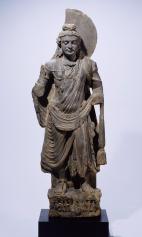
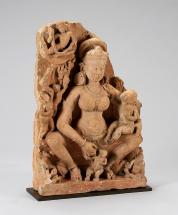
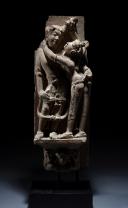
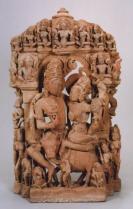
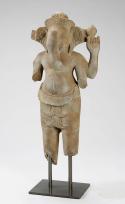
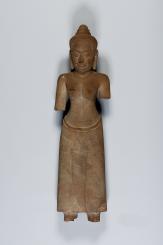
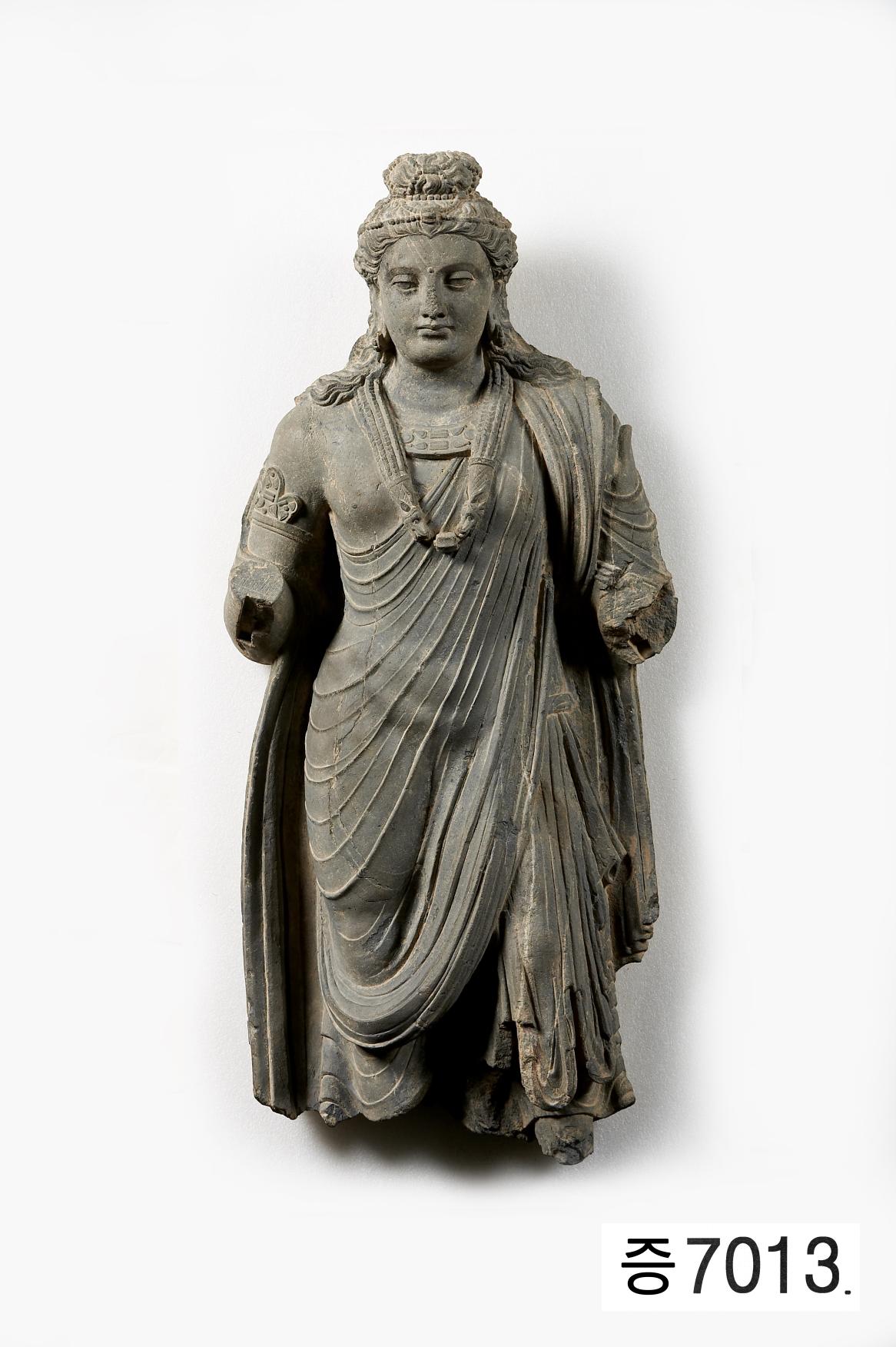

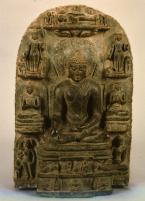
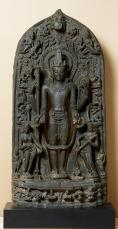
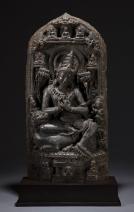
![[촉각전시물] 코끼리 얼굴을 한 신, 가네샤 대표이미지](https://cdn.museum.go.kr/attach_files/THUMB_H_20221110193916935_000.jpg)